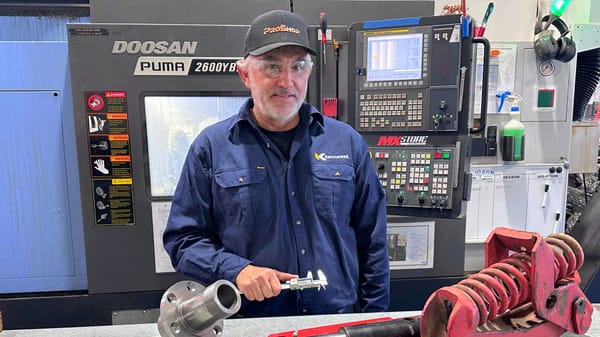Could an endangered fish be saved at this dam in Murray Bridge?
The purple-spotted gudgeon is believed to be extinct in South Australia, but school students plan to bring it back at Greenlands Drive Reserve.

This story was originally published behind Murray Bridge News’ paywall. Paywalled stories are unlocked four weeks after publication. Can’t wait that long? Subscribe here.

Hopes are high that a critically endangered native fish will be able to make a comeback – starting in a disused dam in Murray Bridge.
The southern purple-spotted gudgeon is a smallish, bottom-feeding species which once formed an important part of the food chain in wetlands and pools along the River Murray.
Nowadays it is believed to be extinct in the wild, despite previous efforts to reintroduce it to its natural habitat.
So, last Wednesday, the conservationists and school students who have been working together to save the species tried something new: releasing hundreds of young gudgeon into a dam at Greenlands Drive Reserve in Murray Bridge.
With plenty of aquatic plants and no carp or other predators, the former community nursery should be the ideal spot for the fish to try to breed without human supervision.
Students from Urrbrae, Alberton High School and Holy Family Catholic School donned waders and gumboots, scooped baby fish out of barrels and plopped them into the dam’s brown water.

If the experiment worked, it might become possible to try a river release again one day, Urrbrae year 12 student Matilda Stott said.
Her research back at school had shown that thicker vegetation made the gudgeon more likely to breed successfully.
“It’s very promising to see there’s an area here that’s suitable,” she said.
“The place we went a few years ago (to release young fish into the river), there was very poor water quality.”
“There’s good conditions for them (here).”

The repopulation project wasn’t just helping the purple-spotted gudgeon, either, teacher John Marriott said.
Students who learned about aquaculture gained a deeper understanding of natural systems, biodiversity and resilience.
In turn, that helped them become better people.
“Once you’re more informed about this stuff you tend to make more informed decisions about food and plastic or, when you’re walking along the beach, about picking up a piece of rubbish,” he said.

The purple-spotted gudgeon was long thought to be extinct in South Australia, but a small population was discovered at Jury Swamp, downstream from Mypolonga, in 2002.
Gudgeon bred in captivity have since been released there at least twice, in 2015 and 2019, as well as into the Finniss River.
But Landscape SA ecologist Sam Hardy said few were believed to have survived.
“We’ve had small, encouraging signs that the fish have hung around for a while; but we haven’t been able to re-catch them, and we know those sites haven’t had what the fish need,” he said.
“Greenlands Drive Reserve is the perfect midway surrogate site.”

Fact sheet: southern purple-spotted gudgeon192KB ∙ PDF fileDownloadDownload





